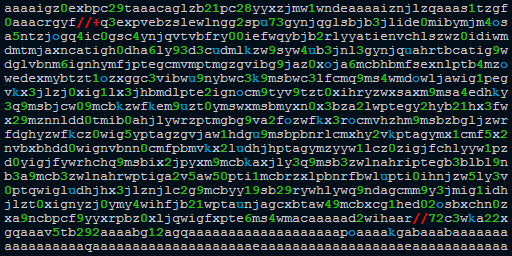

Now, you can use the function as a command like this: $ urldecode https%3A%2F%%2Fsearch%3Fq%3Durldecode%2Bbash To handle pluses ( +) correctly, replace them with spaces using sed: decoded=$(input=$ If you want to decode, you can now simply use: $ echo "http%3A%2F%2Fwww" | urldecode 5 Answers Sorted by: 621 The data is UTF-8 encoded bytes escaped with URL quoting, so you want to decode, with (), which handles decoding from percent-encoded data to UTF-8 bytes and then to text, transparently: from urllib. Source sed with echo -e $ sed -e's/%\(\)/\\\\\x\1/g' file | xargs echo -eįor convenience, you may want to use an alias: $ alias urldecode='sed | xargs -0 printf "%b"' Source sed $ sed file | xargs -0 printf "%b" If this function returns NULL, pad will be exposed as a final caps. queryString 'eventName' + evt.fields 'eventName' + '&' + 'eventDescription' + evt. It is used to parse query strings or path parameters passed in URLs.
#PYTHON DECODE URI HOW TO#
$ alias urlencode='python3 -c "import sys, urllib.parse as ul \ Uridecodebin will by default return an array with all compatible factories, sorted by rank. How to urlencode a querystring in Python Ask Question Asked 12 years, 3 months ago Modified 2 months ago Viewed 1.0m times 743 I am trying to urlencode this string before I submit. URL decoding is the inverse process of URL encoding.

It is often needed when you're reading query strings or form parameters received from a client. Q+werty%3D%2F%3B Python 3 $ alias urldecode='python3 -c "import sys, urllib.parse as ul \ URL decoding, as the name suggests, is the inverse operation of URL encoding. Here’s an example usage: $ urldecode 'q+werty%3D%2F%3B' $ alias urlencode='python -c "import sys, urllib as ul \ Let’s get started! Python 2 $ alias urldecode='python -c "import sys, urllib as ul \ 19 Answers Sorted by: 181 Found these Python one liners that do what you want: Python2 alias urldecode'python -c 'import sys, urllib as ul \ print ul.unquoteplus (sys.argv 1)'' alias urlencode'python -c 'import sys, urllib as ul \ print ul.quoteplus (sys. urllib.request module uses HTTP/1.1 and includes Connection:close header in its HTTP requests. It is also called Percent-encoding because percentage symbols are used to encode certain reserved characters: article collects various ways to decode an URL encoded string. Hence, in case you are passing another URL to the path section (or the query string) of the URL and would like to encode / characters as well, you could do so by setting the safe parameter to '', i.e., an empty string.URL encoding “is a method to encode information in a Uniform Resource Identifier (URI)”. Note that the quote() function considers / characters safe by default. Use the encodeURIComponent() method to encode a URI component.


Call base64.b64decode to decode that to bytes. The decodeURIComponent() method decodes a URI component. In Python 2.x, the quote() function can be accessed directly from the urllib package, i.e., urllib.quote(). Split the data URI on the comma to get the base64 encoded data without the header. In practice, it is useful to be able to manipulate properly quoted and.
#PYTHON DECODE URI PLUS#
Python also has a quoteplus() function that encodes space to plus sign ( + ). The URL parsing functions were originally designed to operate on character strings only. It will essentially replace any special characters in a string using the %xx escape. The quote() function encodes space to 20. This function is intended for quoting the path section of a URL, not the whole URL. In Python 3+, one can URL-encode any string using the () (alternatively, you could use (), which is essentially using the same quote() function from urllib.parse module).


 0 kommentar(er)
0 kommentar(er)
